Open World Journey: Example Game
In my last post I described an experience I’ve long wanted, but never quite had, in an open-world video game. Here I’ll lay out what a game like that would actually look like.
Since I’ve been playing a lot of Breath of the Wild lately, I’m imagining a game with similar mechanics: lots of action and combat, a good number of puzzles, and simplified elements lifted from RPGs and wilderness survival games. But I think this could work for a wide variety of genres, and it definitely needn’t be limited to fantasy settings.
Starting Out
The player starts out in a traditional training/tutorial area, which is rich in resources and light on threats. All the standard opportunites to learn the game mechanics are scattered nearby. However, there’s nothing walling them into this area. They are free to wander in any direction right from the start.
The player’s end goal is immediately visible—but very far away. Maybe it’s a floating island at the end of a winding land bridge, or an enormous reflective orb, or just a really tall gothic tower. Whatever it is, it should be striking and very alluring. The player should want to go there, just from looking at it.
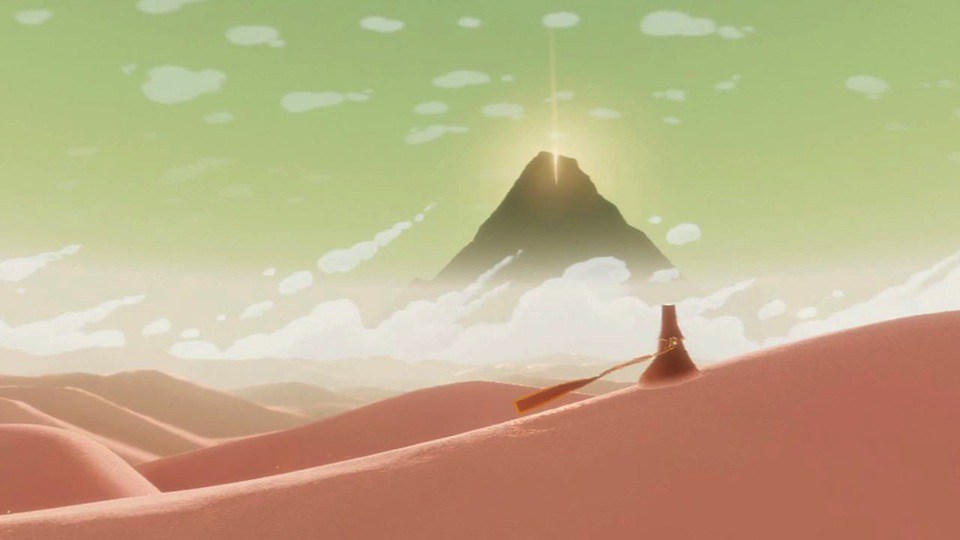
Of course, in between the player and that goal is the entire main quest: a long, winding stretch of gradually increasing challenges. This is the journey I’ve been demanding. It has a number of branching routes along its length, which intersect at various points, but it’s essentially linear. All of the important story content occurs along this stretch, and nearly all of the world’s interesting and unique content is found here.
There is nothing explicitly marking this path. The player probably has a map, but they don’t have a glowing dotted line leading them the “correct” way. The game instead relies on the player’s interest to draw them to their goal. The world is very large and contains plenty of open space, but care has been taken that there will always be a unique landmark somewhere in view: a ruined temple, a dragon perched on a rocky outcropping, a long plume of smoke. If the player follows these landmarks, they will always end up back on the main quest path.
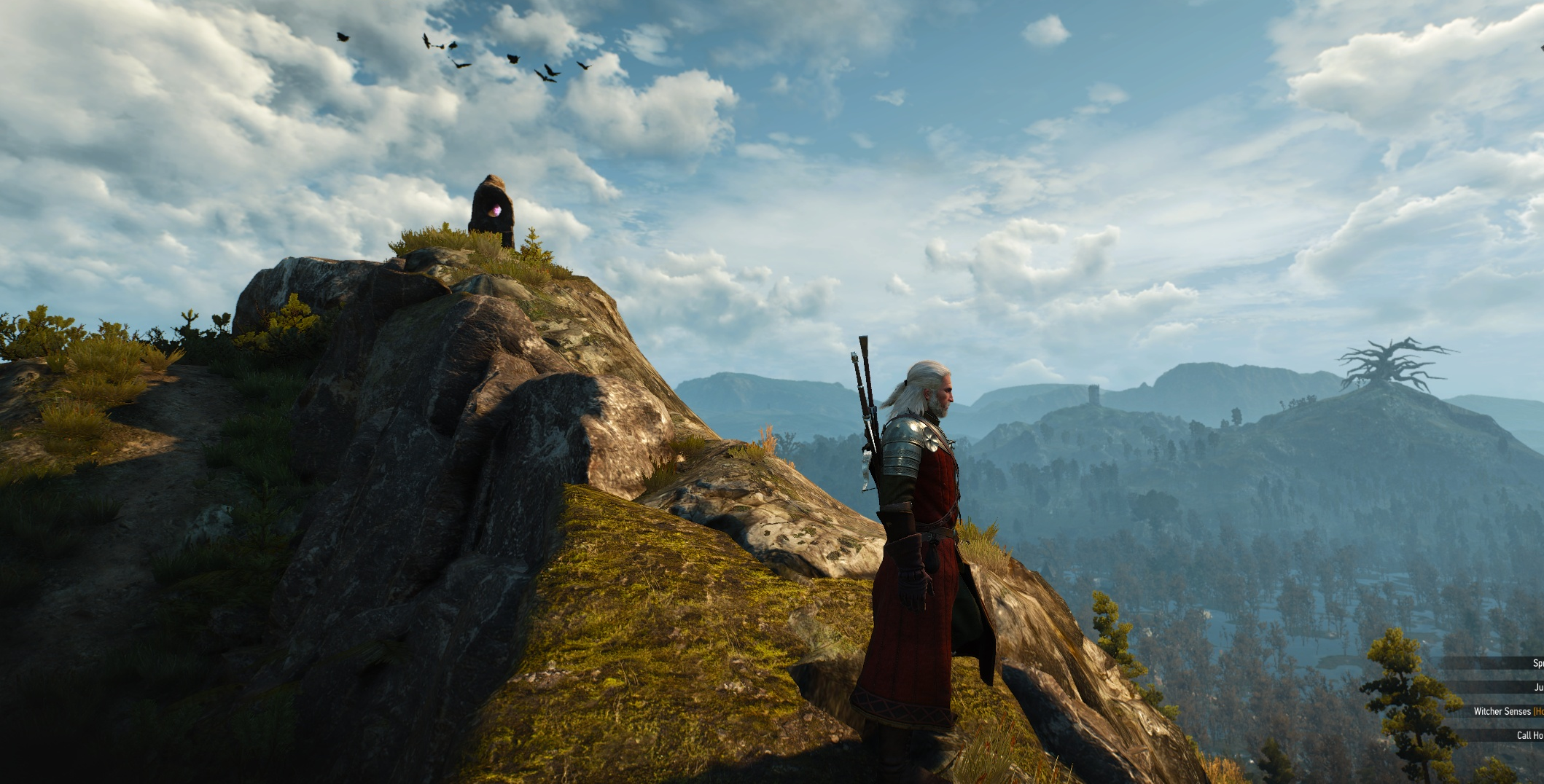
If the player deliberately ignores these signposts, they’ll quickly realize that they’re heading into a very grueling game experience, and will only press on if they’re the kind of player who actually wants that.
The Ocean and the Desert
There is no point the player can reach where the game will drop the mask and flat-out tell them that they can’t go any further. Instead, the player will be walled in by the survival mechanics.
Let’s say the game world has an ocean on one side, and a desert on the other. The game also has a conditional survival mechanic in which the player needs to drink fresh water to survive in harsh environments. This doesn’t affect them in towns or forests, but it does in the desert or out on the open ocean—both places where they will inevitably run out of water and be unable to collect more. The most hardheaded players can load up on water supplies, charge off into these environments, and travel for miles and miles if they want, but eventually they’ll succumb to thirst. Since these environments contain nothing but sand dunes and water, it should be trivial on a technical level to recycle the same content (or generate it procedurally) for as long as it takes them to drop dead. I’ve seen this trick as far back as Grand Theft Auto: San Andreas.
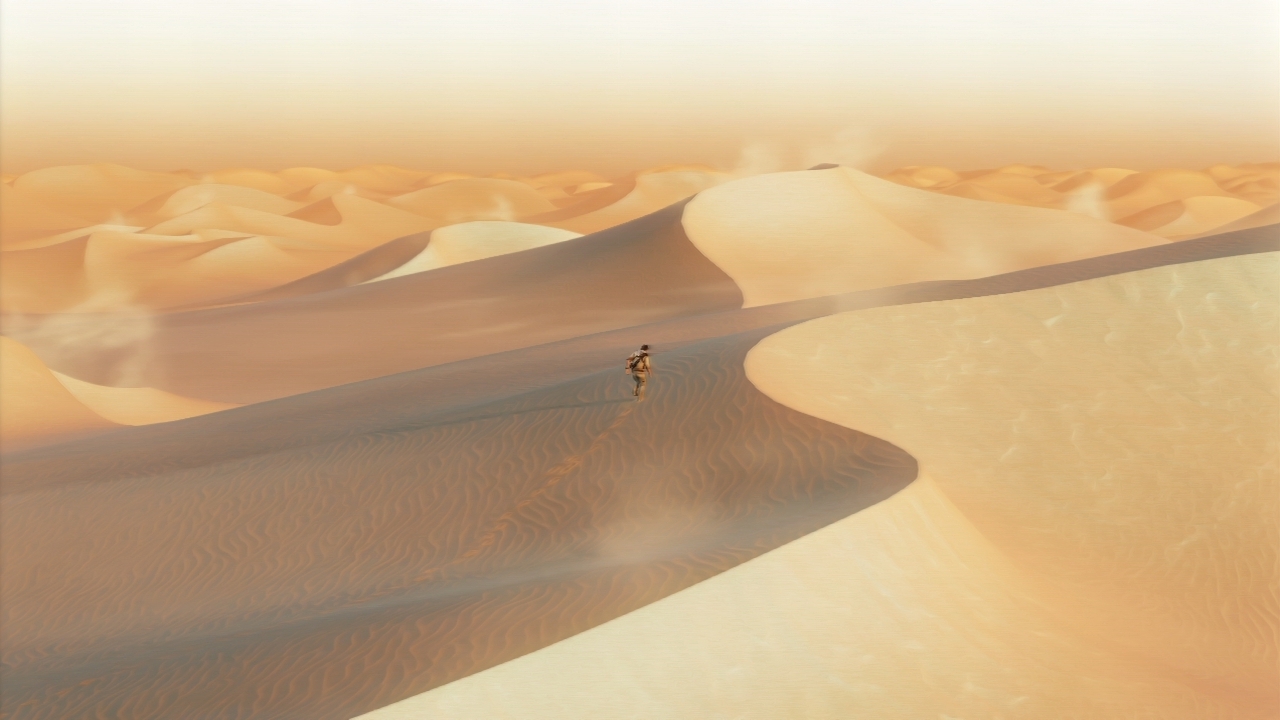
Since there will inevitably be boredom-tolerant players who travel as far as they possibly can into the desert or out to sea just to see how far it goes, there are a few hidden easter eggs way out in the wilds for them to find. Perhaps some supremely tough enemies as well for the challenge-seekers. But otherwise, the authored content remains focused around the main quest.
The Branching Path
For a player like me, it’s very easy to be tempted away from the main story of an open-world game by compelling sidequests. In this game, the sidequests are a bit deceptive: they seem like fun little digressions and breaks from the main quest, but they’re actually alternate routes toward main quest goals.
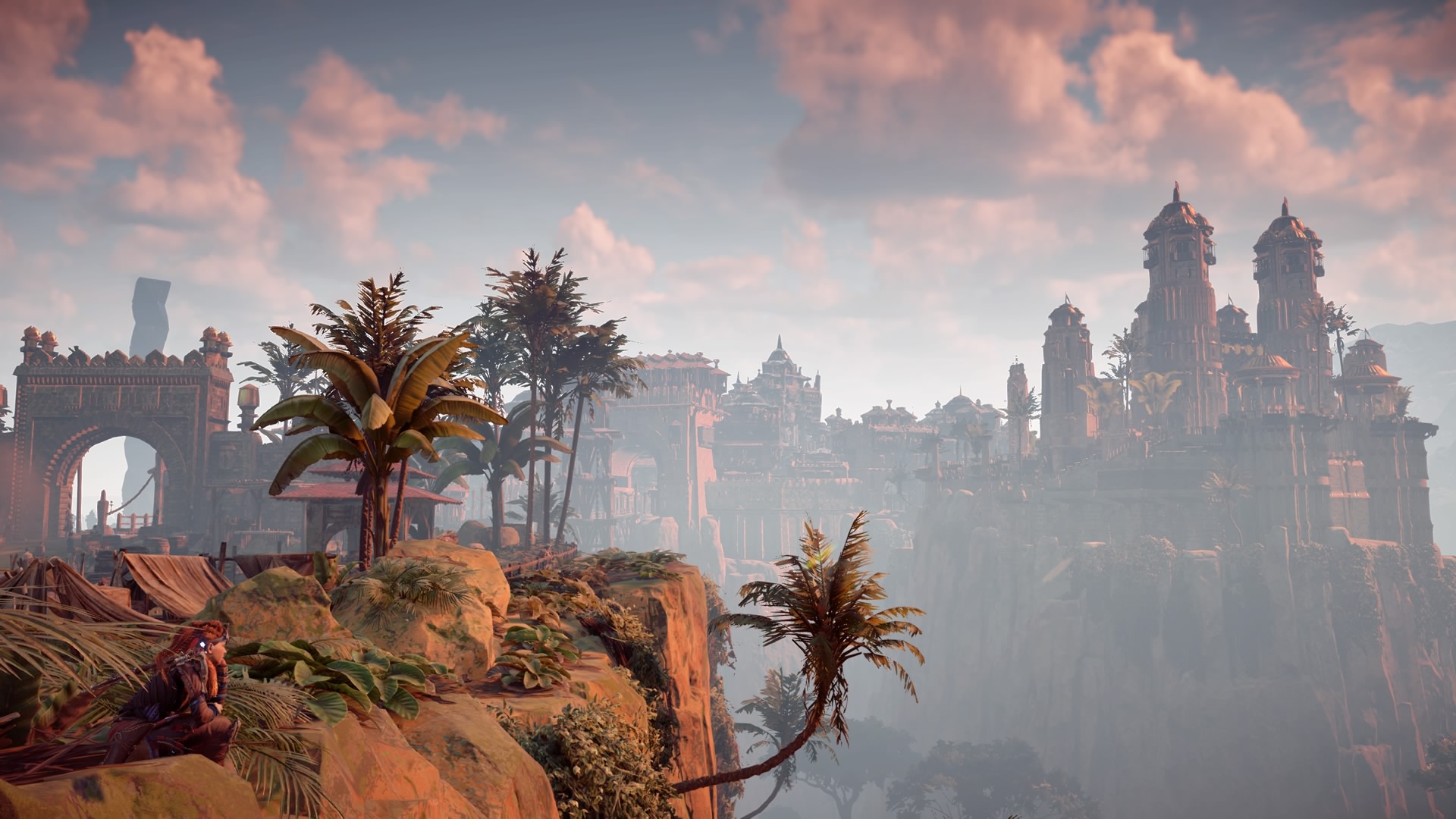
For example, the player might be tasked with entering a city and speaking to its monarch. They’ll need to make their way to the palace gates and somehow convince the guards to grant them entry, most likely through dialog puzzles. On the way into the city, they spot a bit of treasure gleaming at the end of a tiny alleyway. As soon as they approach, a tiny thief darts out of the shadows, snatches the treasure, and runs away. If the player gives chase, they’ll be taken on a winding route through the slums of the city, including numerous hidden passages, and eventually—without at first realizing it—they end up in the cellars beneath the royal palace. From here they can sneak directly into the monarch’s chambers and skip the dialog puzzles entirely.
And the thief is now a part of the main story, as well. Depending on whether the player lets them keep the treasure or steals it themselves, the thief will return at a later point to help or hinder the player—replacing a different character, maybe a palace guard, who would fill this role if the player chose the standard route.
It would take a lot of clever writing to get all the sidequests to merge back into the main storyline, but the overall narrative would be much stronger for it.
Mounting Challenge
The game gets harder as the player advances along the main quest. Standard stuff. However, resources also become more scarce—unlike in most open-world games, where they’re easier to get as the player gains more mastery of the environment.
But while the resources are harder to get, they’re also more fun to get. Early in the game the player could pick fruit directly off trees and use it to craft healing potions. Easy, but not very exciting. By the time the player is trekking through jagged mountains and nearing their final goal, they have to hang-glide off cliffs and snatch feathers from phoenixes in midair, taking care that the bird doesn’t burst into flame and send them plummeting like a meteor.
The player can still buy from vendors, but these are not the friendly shopkeepers from back in the city. These are rugged hunters and scavengers, living in a harsh environment, and they act accordingly. They’ll charge high prices and refuse to haggle. They’ll attack if you approach with a weapon drawn. They never stay in one place, so just tracking them down is a challenge.

This is something of an inversion of most survival/crafting games: resources and crafting become more of a gameplay focus as the player advances. But the increasing variey and challenge of doing so will keep the player wanting to move forward rather than retreating back to simpler and more comfortable environs. It’ll have to, because…
There Is No Fast Travel
Or if there is, it requires a lot of work to use it (e.g. gathering lots of rare ingredients in order to cast a spell) and thus can only be used sparingly. There’s nothing stopping the player from going back in the direction they came, but returning to early areas of the game once a lot of progress has been made would be long and arduous. Plus, the player’s various adventures have altered the landscape in ways that make it trickier to navigate: e.g. their epic fight with a troll ended with a bridge collapsing, or they only escaped the necromancer’s caverns by flooding them.
The landscape design should emphasize this. The player gains elevation as they head along their quest, and after each milestone—an area cleared, a tough boss dispatched—they’re rewarded with an even higher view of all the ground they’ve covered. If the game is doing its job, they’ll feel amazed at how far they’ve come—proud, even.
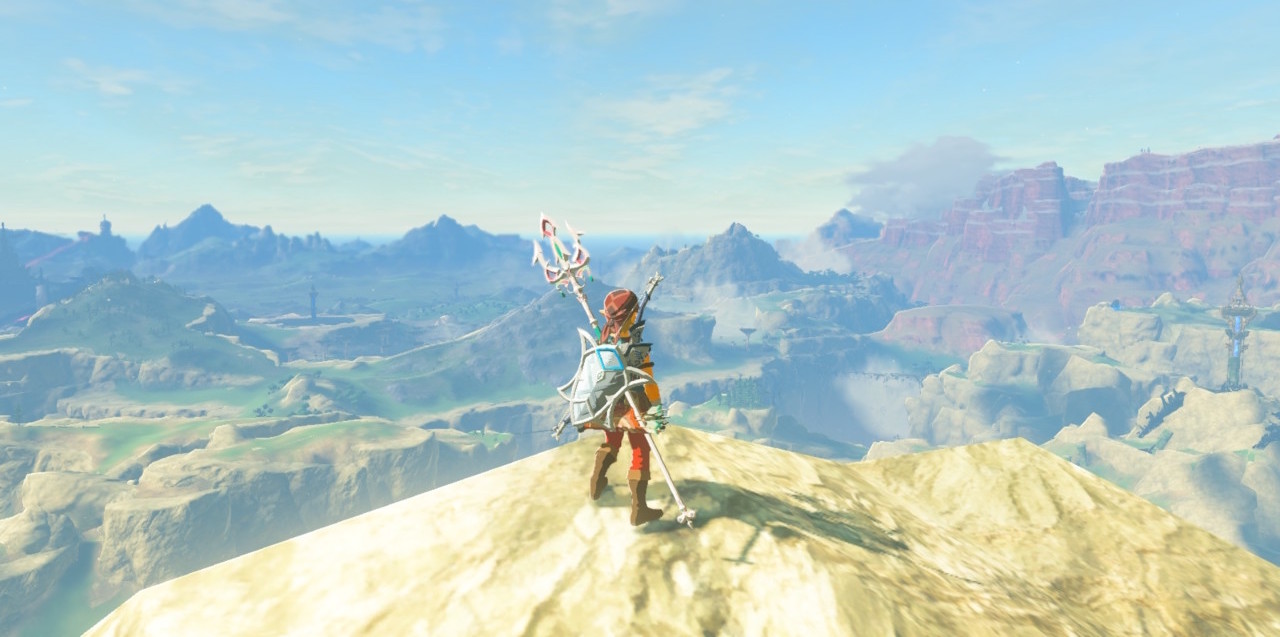
The End of the Journey
The player does get one free ride, when they defeat the final boss/dungeon/challenge. They get whisked magically over the entirety of the game world and back to a main hub area close to where they started. They get to see firsthand the results of everything they’ve done, and particularly what happens now that they’ve completed their quest; maybe a cursed blight is lifted and huge areas of dead vegetation suddenly spring to life.
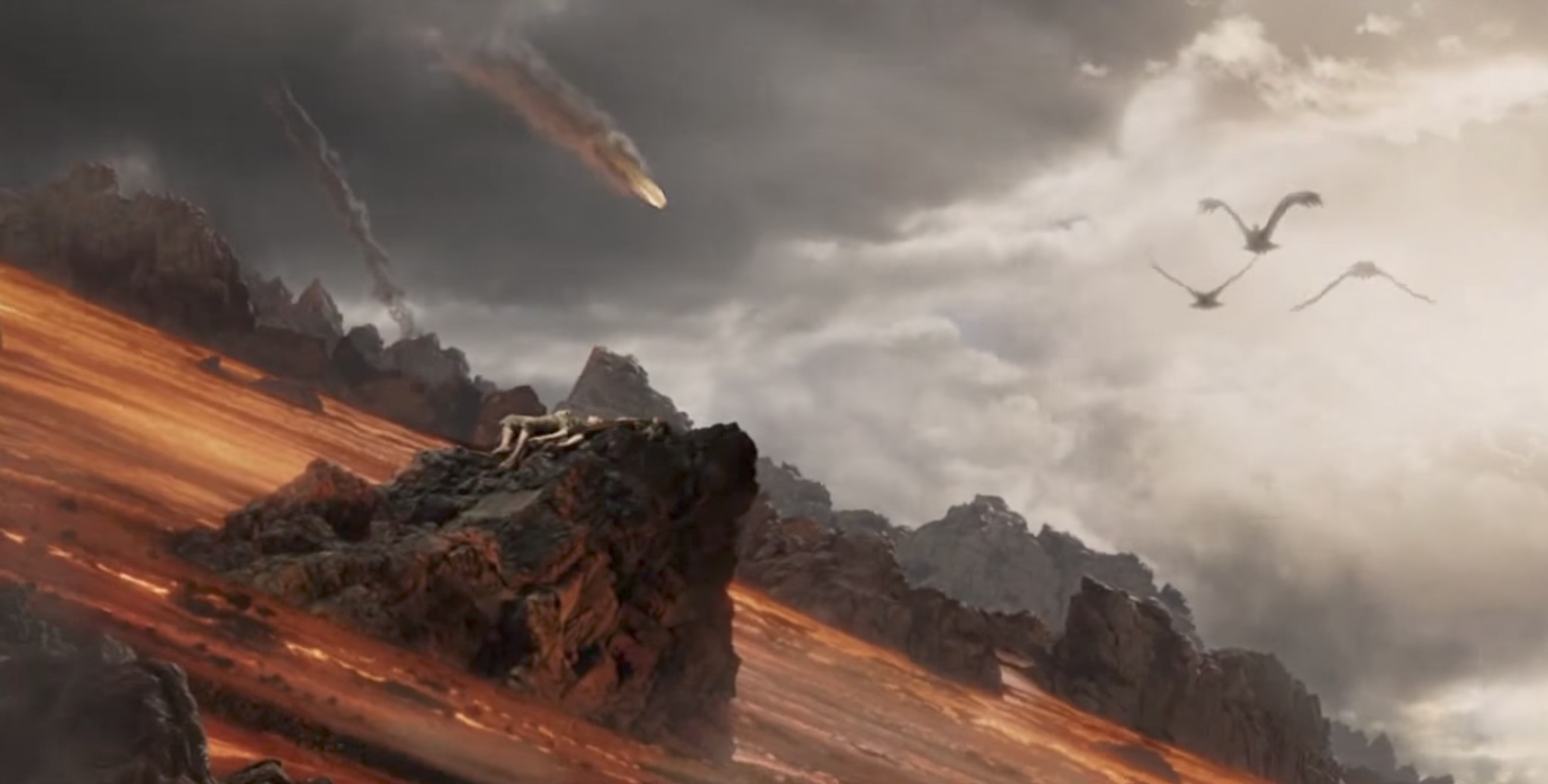
All of this reflects a real change in the world, and the player can travel back to see it close up. The endgame might have a few lingering sidequests to resolve, but most of the focus would be on just re-experiencing the world now that the player’s great journey is finished. They’d get to see the resolutions to all the little stories they encountered along the way, and what good (or even bad) their heoric deeds have brought about. This would be a lot more satisfying than a simple cutscene.
Wrapping Up Loose Threads
I think this structure would provide the feeling of an epic journey that I’ve been craving without having to change too much of the gameplay that adventure/RPG players expect. But there are other conventions that should be reexamined as well: would the game have an ordinary final boss (a huge monster thing with tons of hit points and strong attacks that you fight in a big circular arena), or something different? Could we strip away weapons and items from the player instead of adding them and still have a fun experience? I’d love to hear more discussion around these ideas, because I’m sure I’m not the only person who wants to play a game like this. If I ever have the time I might even try to prototype something. Finding that time, of course, is going to be an epic journey in itself.